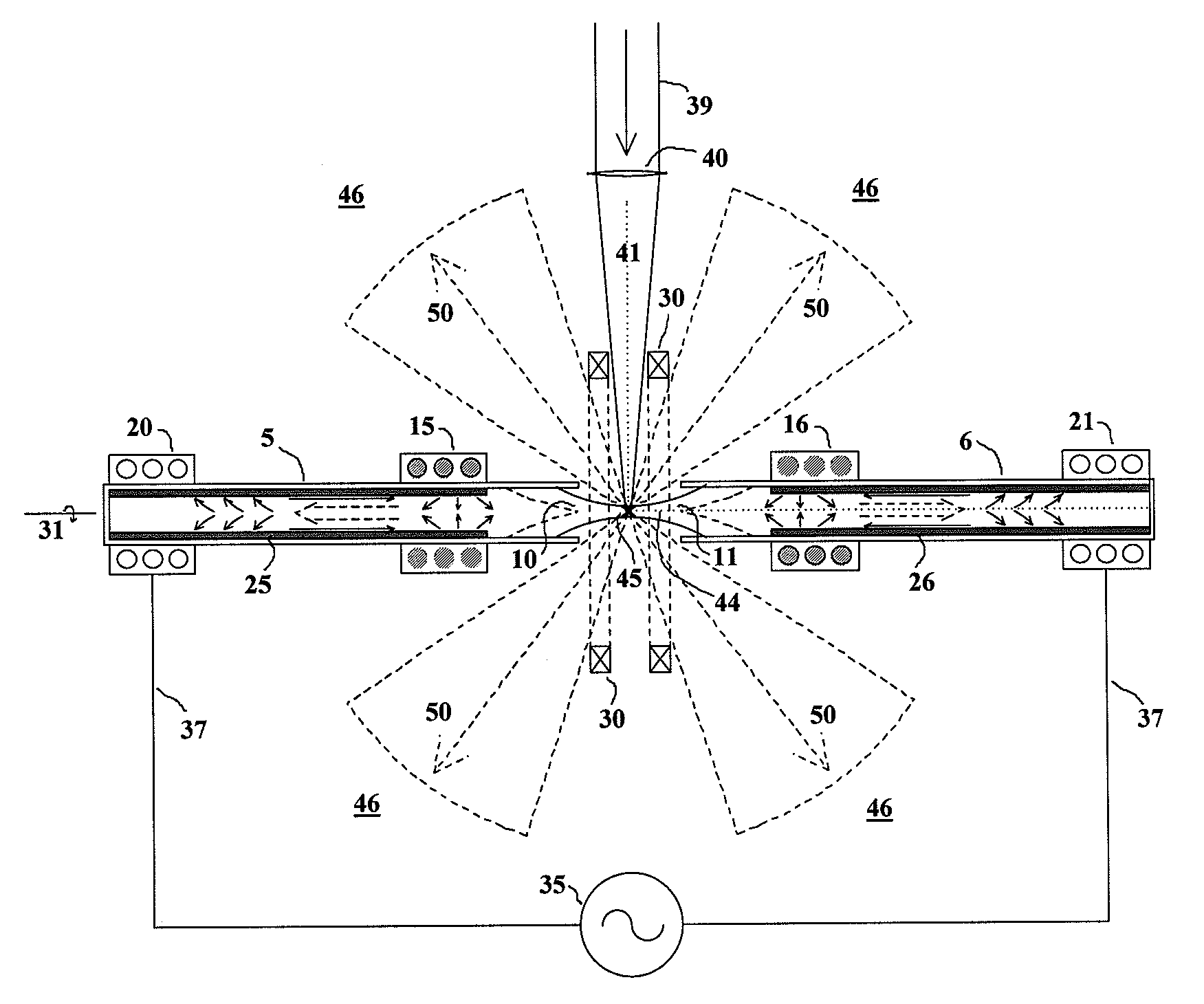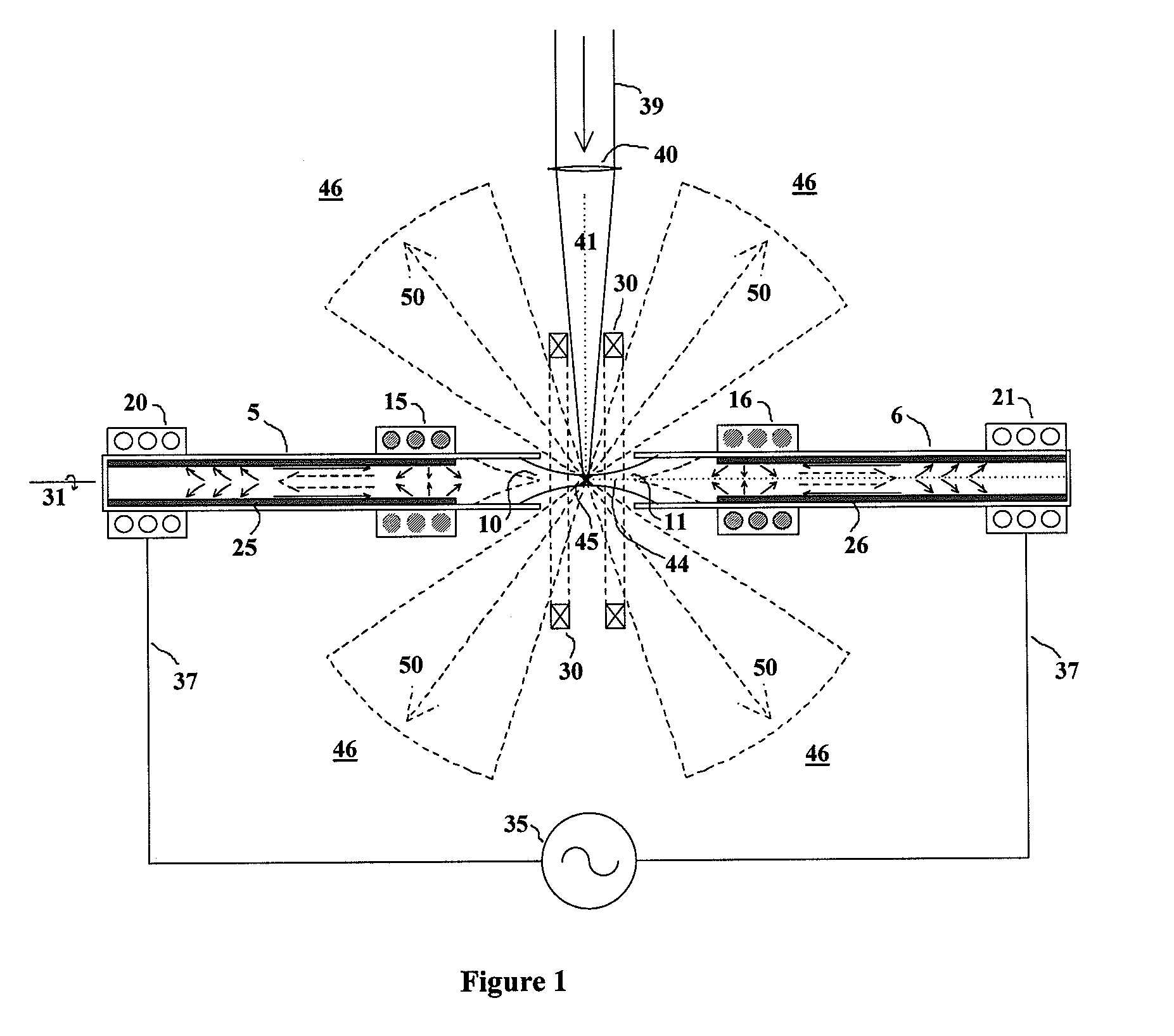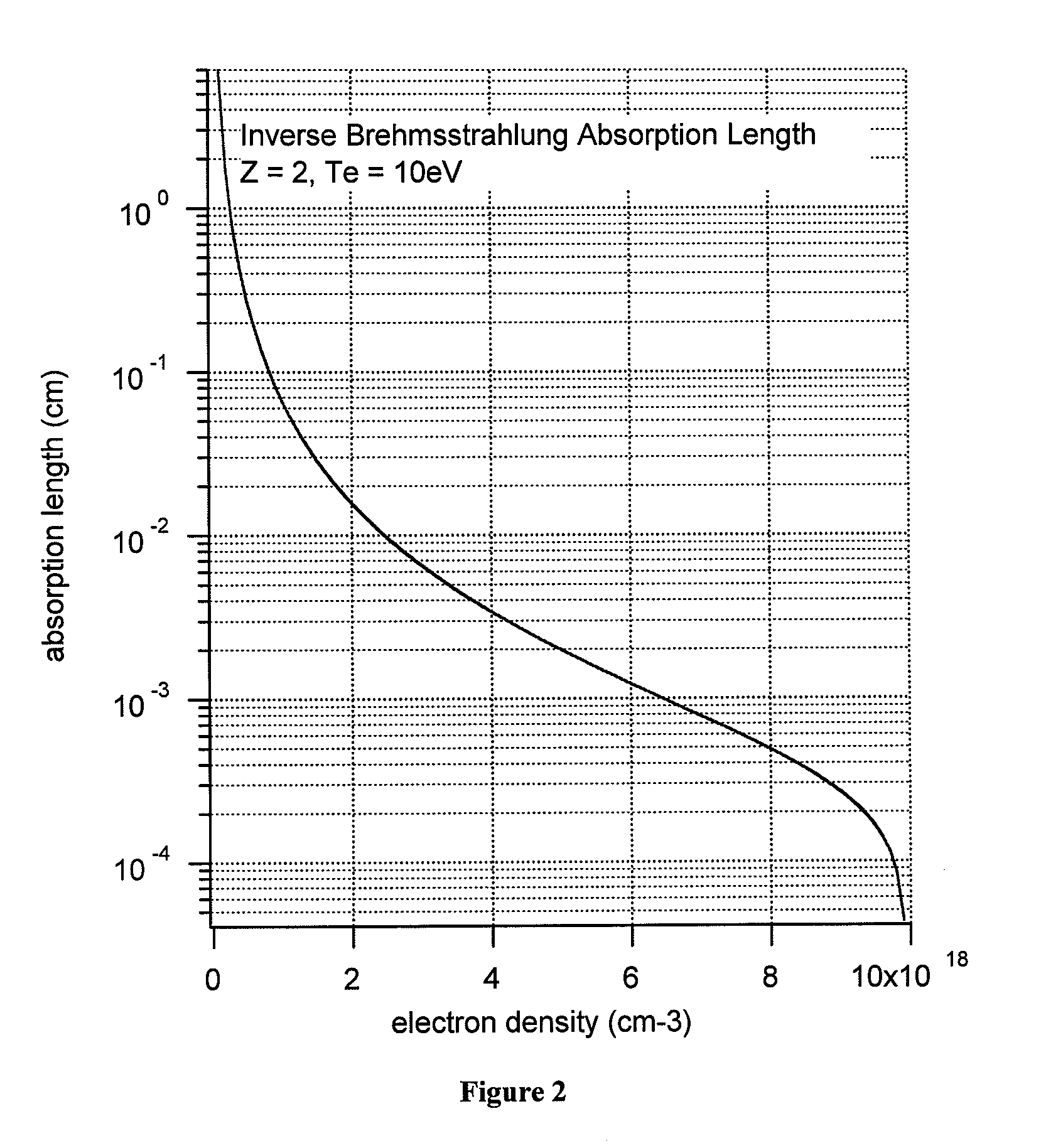Laser heated discharge plasma EUV source
a plasma euv source and laser irradiation technology, applied in the direction of optical radiation measurement, instruments, therapy, etc., can solve the problems of low conversion efficiency of laser light into euv radiation, low total lithium inventory in this approach, and high absorption of euv light by direct laser irradiation of solid density lithium targets, etc., to achieve high repetition rate and high impedance
- Summary
- Abstract
- Description
- Claims
- Application Information
AI Technical Summary
Benefits of technology
Problems solved by technology
Method used
Image
Examples
first embodiment
[0025]the invention is illustrated in FIG. 1, relating to linear coaxial Z-pinch confinement of the lithium plasma with heating by a transversely incident pulsed or continuous wave carbon dioxide laser. An axial magnetic field may also be applied to enhance pinch confinement stability.
second embodiment
[0026]the invention is illustrated in FIG. 4, relating to star pinch confinement of the lithium plasma with heating by a pulsed carbon dioxide laser.
third embodiment
[0027]the invention is illustrated in FIG. 7, relating to hypocycloidal pinch confinement of the lithium plasma with heating by a pulsed carbon dioxide laser.
[0028]A fourth embodiment of the invention relates to additional lithium vapor containment applied to the geometry of the first embodiment, as illustrated in FIG. 8.
PUM
 Login to View More
Login to View More Abstract
Description
Claims
Application Information
 Login to View More
Login to View More - R&D
- Intellectual Property
- Life Sciences
- Materials
- Tech Scout
- Unparalleled Data Quality
- Higher Quality Content
- 60% Fewer Hallucinations
Browse by: Latest US Patents, China's latest patents, Technical Efficacy Thesaurus, Application Domain, Technology Topic, Popular Technical Reports.
© 2025 PatSnap. All rights reserved.Legal|Privacy policy|Modern Slavery Act Transparency Statement|Sitemap|About US| Contact US: help@patsnap.com



